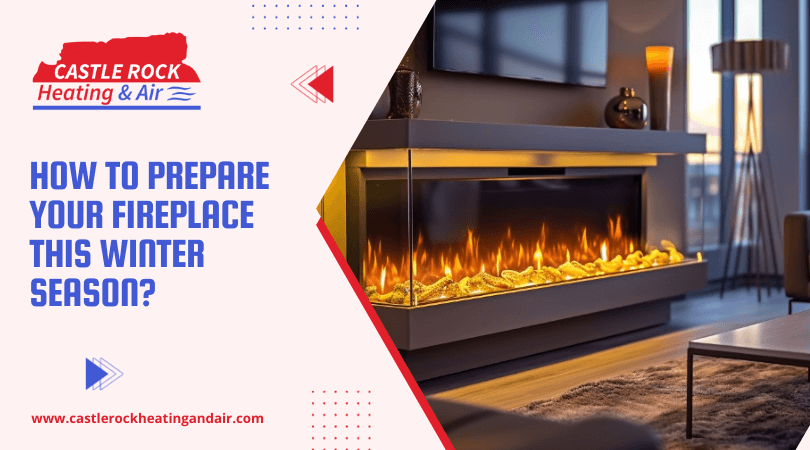
One of the best things about winter is snuggling in front of the fireplace and spending some quality time with your loved ones. But before you light up the fireplace this winter, there are a few things you need to check.
In this blog, we have listed everything you should do to prepare your fireplace this winter season. It will help your fireplace work at maximum efficiency, provide comfort, and prevent accidents.
Tips to Prepare Your Fireplace this Winter Season
⇒ Inspect Your Chimney
The first thing you should do before reigniting the fireplace is schedule a chimney inspection. Doing so is important, as damaged chimneys are one of the most common fireplace issues that homeowners face. The issue is critical as creosote and lint build up inside the chimney, making it a huge fire hazard.
Experts will clean the chimney and remove all the accumulated contaminants from your chimney and flue pipe. Additionally, they will get rid of pests that make their home in your chimney if you don’t use it regularly.
⇒ Check the Fireplace for Cracks
After the chimney, inspect your fireplace thoroughly. Look for cracks and other defects in the bricks of your fireplace. Also, check the hearth floor and the exterior masonry for damage. If you find any issues with them, get them fixed immediately, as it can lead to back drafting and affect your fireplace’s efficiency.
⇒ See if the Damper is Working Properly
A damper is an important part of your fireplace, as it controls the airflow from the chimney. If your damper isn’t functioning properly, it will affect the efficiency of your fireplace. So lay down on your back (clean the floor first) and check if the dampers open and close properly.
⇒ Prune Nearby Branches
Trees and branches growing near your chimney are a problem because they can damage the chimney cap, and the debris can block the flue pipe. So prune down the branches to an acceptable length so they grow at a distance away from your chimney.
⇒ Remove the Ash Buildup
Traditional wood-burning fireplaces produce ash with each use. Over time, this ash builds up and clutters your fireplace. So, to prepare your fireplace for winter, remove the existing ash buildup.
If you recently used the fireplace, wait for a few days to remove the ash, as there can still be hot coals inside the ashes. You can use the ash as a fertilizer in your garden to benefit the plants.
⇒ Repair or Replace the Chimney Cap
The chimney cap stops the sparks from going out of the chimney and prevents trees and leaves from catching fire. It also serves as a defense from pests and rodents that nest in your chimney.
Therefore, use binoculars and check the chimney cap and see that the screen is intact. If your chimney cap is damaged, consider replacing it to ensure complete protection during winter.
⇒ Burn Seasoned Hardwood
While the belief that softwoods like pine lead to excess creosote buildup is a common fireplace myth, when you are lighting up your fireplace in winter after a long period of dormancy, it’s best to burn hardwood like Oak.
It’s because seasoned hardwood will burn easily, and your fireplace won’t have to work quite as hard to produce warmth in the winter season.
⇒ Schedule a Fireplace Inspection
Lastly, there is no better way to ensure your fireplace is in the best condition before winter than to schedule a fireplace inspection. Experts from Castle Rock Heating & Air will inspect your fireplace thoroughly and fix any problems with it.
With our expertise, we guarantee that your fireplace will function at its peak throughout the winter and holidays. So, for a warm and cozy winter, call (303) 798-0035 to book your fireplace inspection service.





